Speaker
Description
The “Perugia 2019 Surface” radiation damage model is a Synopsys Sentaurus Technology CAD (TCAD) numerical model which accounts for surface damage effects induced by radiation on silicon particle detectors. In order to get a complete picture of the phenomena taking place in the volume of the irradiated silicon detectors, the non-ionizing effects, referred to as bulk damage, also need to be taken into account in the description of a more inclusive “New University of Perugia” model. These non-ionizing effects are responsible for the increase of the leakage current in silicon sensors, the changes in the effective space charge concentration and the charge collection efficiency. In this work, the significance of the input parameters of the model, such as electron/hole cross sections and acceptor/donor introduction rates is investigated, with respect to the changes in the leakage current, the full depletion voltage, the charge collection efficiency and the damage constant α (a figure of merit of an irradiated device) of a PIN diode. A comparison is made between the simulation’s output and experimental data from irradiated PIN diodes produced at Fondazione Bruno Kessler (FBK). Finally, the possibility of the validation of the analytical model with the examination of the case of a Low-Gain Avalanche Detector (LGAD), and its general application for future silicon sensors is discussed.




